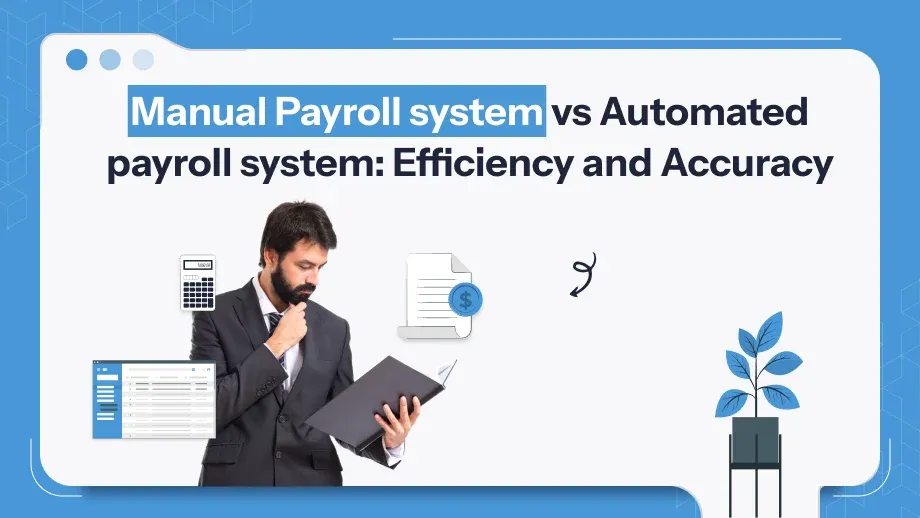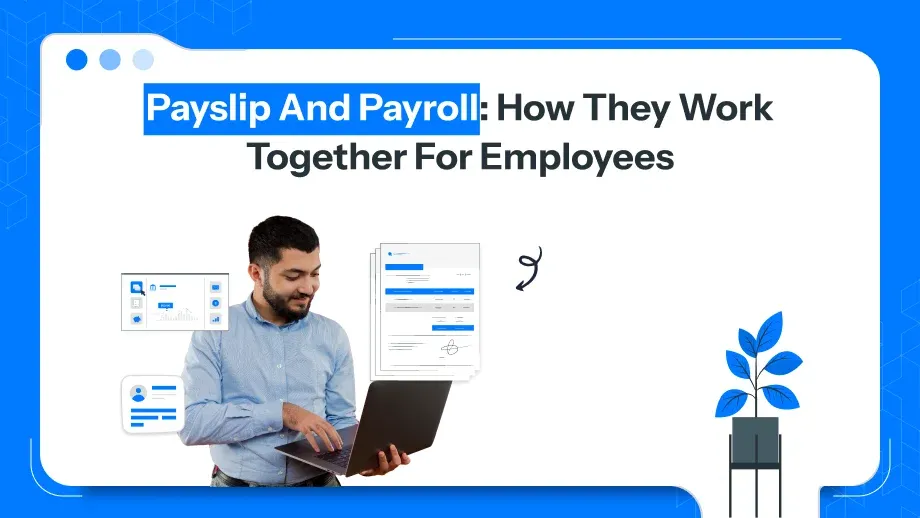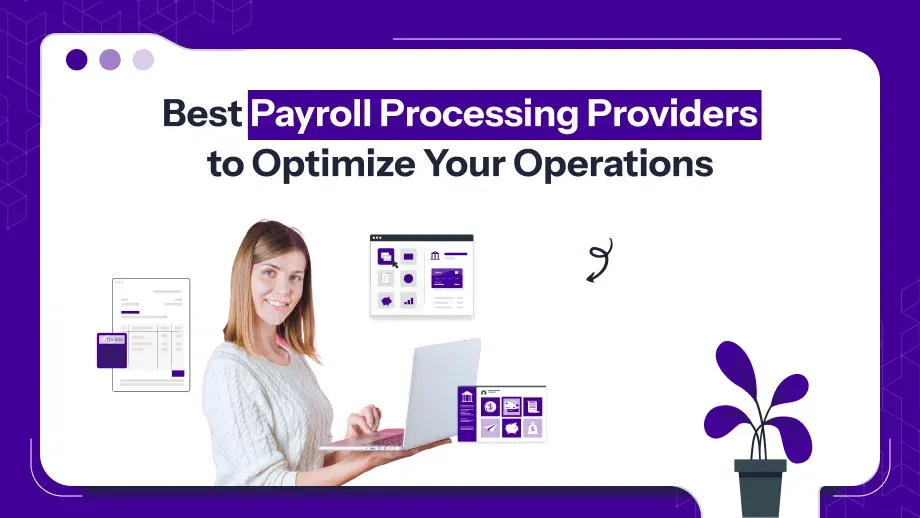
Running a business is not without its payroll management importance. Whether the business is big or small, it is the responsibility of management to ensure proper payment and in good time to their employees.On occasion, two payroll systems have been created: automated payroll systems and manual payroll system. In order to help you choose the ideal system for your company, we’ll go over the main differences, benefits and difficulties of each in this piece.
These systems take use of cutting-edge software to expedite payroll processing, minimize human error, and guarantee tax law compliance. Payroll processing and manual payroll system has become even more safe and accessible to businesses of all sizes with the introduction of cloud-based services. Payroll management has undergone major modifications as a result of this evolution, therefore it’s critical to determine what system best suits your business’s expansion and efficiency goals.
What is Manual Payroll?
Processing payrolls is typically done by manually or using spreadsheets in a manual payroll system, which is the traditional approach. Employers physically determine pay, taxes, expenses, and other financial aspects under this approach. Reviewing timesheets, figuring up worker hours, applying tax rates, and generating pay checklist are all potential steps in the wage and hour process.
Advantages of Manual Payroll System
Economical for Small Enterprises
One of the main benefits of the manual payroll system is its affordability, particularly for new or small-scale businesses with little funding. Since there is no need to purchase specialist payroll software or sign up for third-party payroll services, companies are able to prevent ongoing membership or license costs. For businesses with a small workforce and straightforward payroll requirements, manual payroll system can be a cheap and efficient option.
Full Control Over Payroll Process
Businesses have total control over their payroll process when they use manual payroll. From calculating out wages and deductions to sending out paychecks, proprietors or payroll administrators may take care of everything directly. More freedom to alter payroll in reaction to particular situations, like bonus payments, overtime, or only once adjustments, is made possible by this level of flexibility. For example, through investigating the manual payroll system calculations, an employee’s problem or discrepancy can be addressed right away.
Easy to Implement
Setting up a manual payroll system is straightforward and can be done with basic tools like spreadsheets or even pen and paper. There is no complex software to install, no need for integrations, and little-to-no learning curve for those familiar with accounting principles. This simplicity can be a big advantage for new businesses just getting started, as it doesn’t require additional resources or expertise to implement.
Greater Transparency
In a manual payroll system, all payroll calculations and records are typically visible to those managing payroll. This transparency can help businesses ensure that no details are missed and employees can verify calculations. Business owners can also make adjustments more easily and explain payroll discrepancies to employees without relying on third-party systems.
No Ongoing Subscription or Maintenance Fees
Manual payroll processes don’t require a continuous subscription charge, in contrast with automated payroll systems, which may have monthly or yearly fees. There are no recurring expenses associated with maintaining the system after the required resources, such as payroll calculators, software (such spreadsheets), and labor tracking tools, have been set up.
Customizable for Unique Situations
Manual payroll system allows businesses to easily tailor the payroll process to their specific needs. For example, a company with employees working in different states or countries can manually apply region-specific tax deductions, without worrying about automated systems that may not offer such flexibility. Additionally, businesses with unique play structures or complex payroll arrangements can manually adjust these to reflect individual employee contracts or special requirements.
Disadvantages of Manual Payroll system
Time-Consuming
The time required to handle pay is one of the most obvious drawbacks of a manual pay system. Payroll must be completed entirely by hand, including calculating wages, applying tax rates, deducting benefits, and creating paychecks. When handling payroll for a big amount of employees, this might become especially difficult. The laborious process still takes valuable time, even with a small workforce that might use payroll software to perform additional important company duties like support for clients, revenue, or planning for growth.
Higher Risk of Human Error
Because manual payroll system procedures depend on manual computations and data entry, they are susceptible to human mistake. Errors like entering employee hours erroneously applying the incorrect tax rate, or miscalculating deductions may occur to even the most diligent payroll managers. Inaccurate paychecks, tax fines, and unhappy employees could come from these errors. Fixing these errors after they have occurred can also be expensive and time-consuming, especially if they have financial or legal consequences.
Compliance Risks
Manual payroll system problems are subject to a wide array of federal, state, and local regulations and laws that are constantly changing. Managing tax rates, deductions, and employee benefits can be difficult to manage manually, particularly if an organization operates in multiple regions or has complex pay structures. In such cases, manual payroll managers may miss tax law updates or even violate the latest labor regulations, thereby attracting costly penalties, fines, or audits from tax authorities.
Limited Scalability
The intricacy of your pay increases with the size of your company. Payroll processing by hand might be adequate for small companies with a small workforce. However, managing payroll by hand becomes more challenging and ineffective as the staff grows. Manual payroll processes become sluggish and error-prone with increasing workforces. Particularly when dealing with more complicated payroll activities like incentives, over time, shift variations, and multi-state taxation, systems for payroll that rely on spreadsheet or paper records find it hard to grow.
What is Automated Payroll?
Software-based payroll or one through an internet site handles an entity’s entire wage computation, both the taxes that accompany them as well as deducting any existing benefits. For its part, payroll system integration becomes easy with respect to timekeeping and HR packages, even including accounting systems within its scope.
Advantages of Automated Payroll System
Enhanced Accuracy
Payroll systems that are computerized greatly lower the possibility of human error. Inaccurate taxes computations, overlooked deductions, or incorrectly reported employee hours are all common errors in the manual payroll system. Because the system uses preset rules and algorithms to guarantee accuracy in every step of the payroll process, automation nearly eliminates these errors. Payroll discrepancies diminish as a result of these errors, preserving staff satisfaction and taxation authority’ conformity.
Compliance with Tax Laws
Payroll involves a complex web of federal, state, and local regulations. Keeping track of changing tax rates, benefits, deductions, and other compliance factors can be a daunting task for businesses. Automated payroll systems are designed to stay updated with the latest tax laws and labor regulations, ensuring that your payroll calculations are always in compliance. Most of these systems come with a feature of built-in tax rates, benefits, and deductions. In this way, there is little chance of getting fines or penalties from the non-compliance.
Minimized Administrative Tasks
The necessity for manual administrative responsibilities including creating reports, completing tax forms, or reconciling manual payroll system information is greatly reduced with automated payroll. At a single button click, all of these may be completed, and reports can be produced instantly. In order to guarantee that all payroll data is exact and uniform across departments, the system can also interface with human resources and accounting systems. Businesses can devote resources to more strategic tasks such customer service or growth by cutting less on administrative tasks.
Increased Contentment among Employees
Automated payroll systems guarantee that workers are paid accurately and on time every time they get paid, which is something that employees value. Computerized systems eliminate errors and delays by generating paychecks automatically based on the data entered. Self-serve portals, which allow workers to view their pay stubs, returns for taxes, and leave balances, are another feature of many computerized payroll systems.
Scalability in Growing Businesses
As your business grows, so do your payroll needs. What works for a small business with only a few employees may not be feasible as you expand. Automated payroll systems are highly scalable, meaning they can easily handle an increasing number of employees, complex pay structures, and multi-state or international payroll. You don’t have to manually modify the system for business growth; in fact, automated systems can accommodate variable working hours and benefits as well as multi-location payroll without requiring any extra effort.
Disadvantages of Automated Payroll System
High Initial Setup Costs
High initial setup cost is one of the major cons of automated payroll systems. They will save money over time, but businesses have to be ready for the investment made in the front end. That may include purchase of payroll software, subscription to cloud-based services, and potentially system setup cost, customization charges, and employees’ training fees. To these small businesses that have very lean budgets, this cost is an important barrier in adopting an automated payroll system.
Recurring Subscription or Licensing Fees
In addition to the initial cost of setting up, most of the automated payroll systems require subscription or licensing fees, which are payable on a recurrent basis. For small businesses, these recurring costs can be really high. Depending on the software or service provider, fees can be charged monthly or annually and may vary based on the number of employees, additional features, or integrations with other software systems. These costs are hard to predict and may become a financial burden if your business grows or if unexpected price increases occur.
Dependence on Technology
Automated payroll systems rely on technology to function, and any technological issue can disrupt payroll processing. This includes software glitches, system outages, or connectivity problems.This includes software failures, system failure, or connection issues. In such a case, payroll may delay or be incorrect in the system that may cause the employees to encounter problems with it. Also, businesses that may operate in bad internet connectivity places or experience common tech-related malfunctions may struggle to have sure payroll processing.
Learning Curve and Employee Training
Even though automated payroll systems and manual payroll system are more efficient than manual ones, they can have a steep learning curve that takes some time and training to fully grasp. Pay managers and HR personnel have to get familiar with the system’s features, such as creating worker profiles, configuring payroll rules, and creating reports, even though the software is typically simple to use. Time spent by workers can be taken away from other responsibilities and additional operating costs could come from training them on how to use the system efficiently.
Data Security and Privacy Risks
Although automated payroll systems are generally more secure than manual methods, they are still susceptible to data security breaches. Payroll systems store sensitive employee information, including bank account details, social security numbers, and tax data, making them a target for hackers. While many automated payroll systems use encryption and other security measures, businesses must take extra precautions to ensure their data is protected.
What System Is Best for Your Company?
The size, goals, and budget of your company all play a major role in the decision between an automated and manual payroll system.
What is the difference between automated and manual payroll systems?
Manual Payroll: If you’re running a small business with few employees, a short budget, and simple payroll requirements, this system can be a suitable fit. It functions optimally for companies whose owners or HR managers have the time and expertise to manage payroll by hand without compromising other areas of their company.
Automated Payroll: An automated payroll system can save time, cut down on errors, and guarantee compliance if your company is expanding or if you’re handling complicated payroll obligations (including numerous deductions, benefits, and different tax rates). It’s especially advantageous for companies with big workforces or those that wish to.
Conclusion
Pros and cons associated with both a manual and automated payroll system may prevail. Hence, the option best suited to your business largely depends on certain variables such as company size, budget, or even the complications surrounding your company’s payroll issues. Small enterprises will opt for the manual payroll system is one for hardly requires much monetary investments, payment management in large entities benefit from such speed, precision, and law abidings attached to this kind of payrolling system. In the long run, the switch to an automated payroll system can offer significant time savings and ensure that you’re paying your employees correctly, every time.






